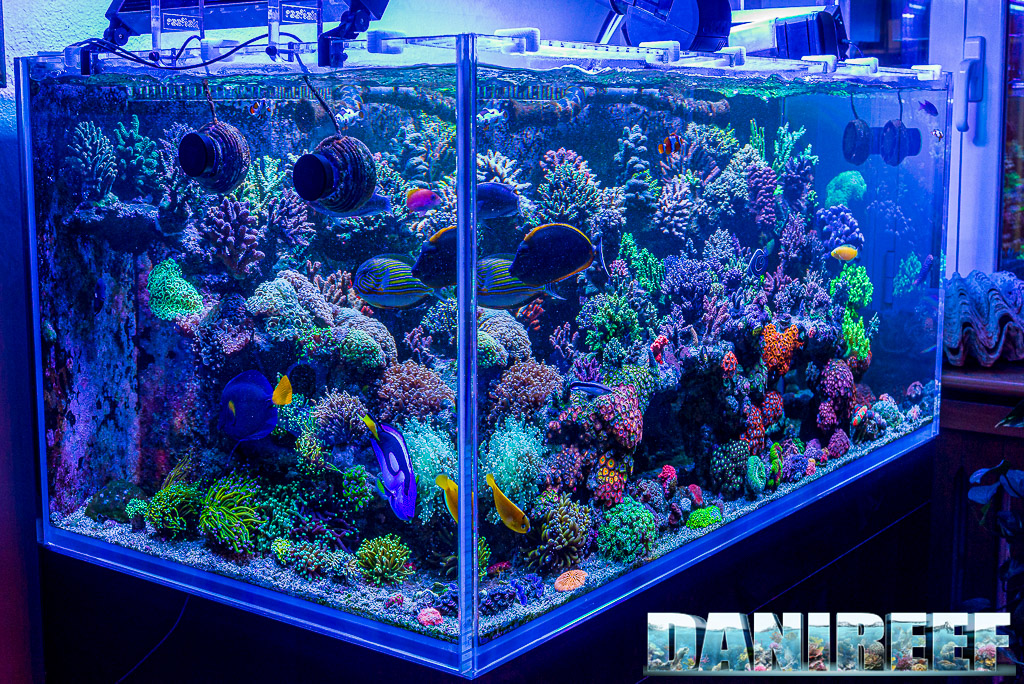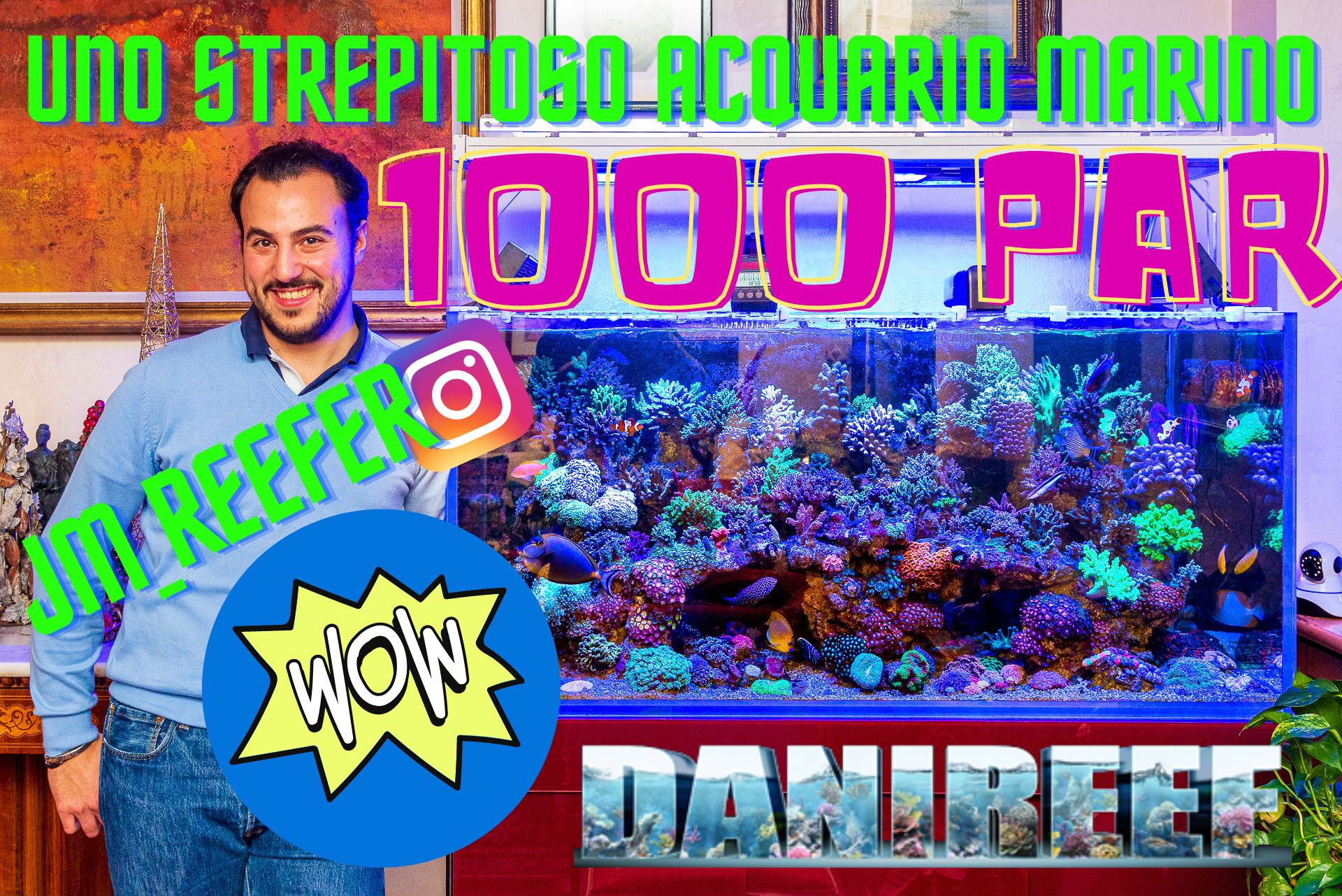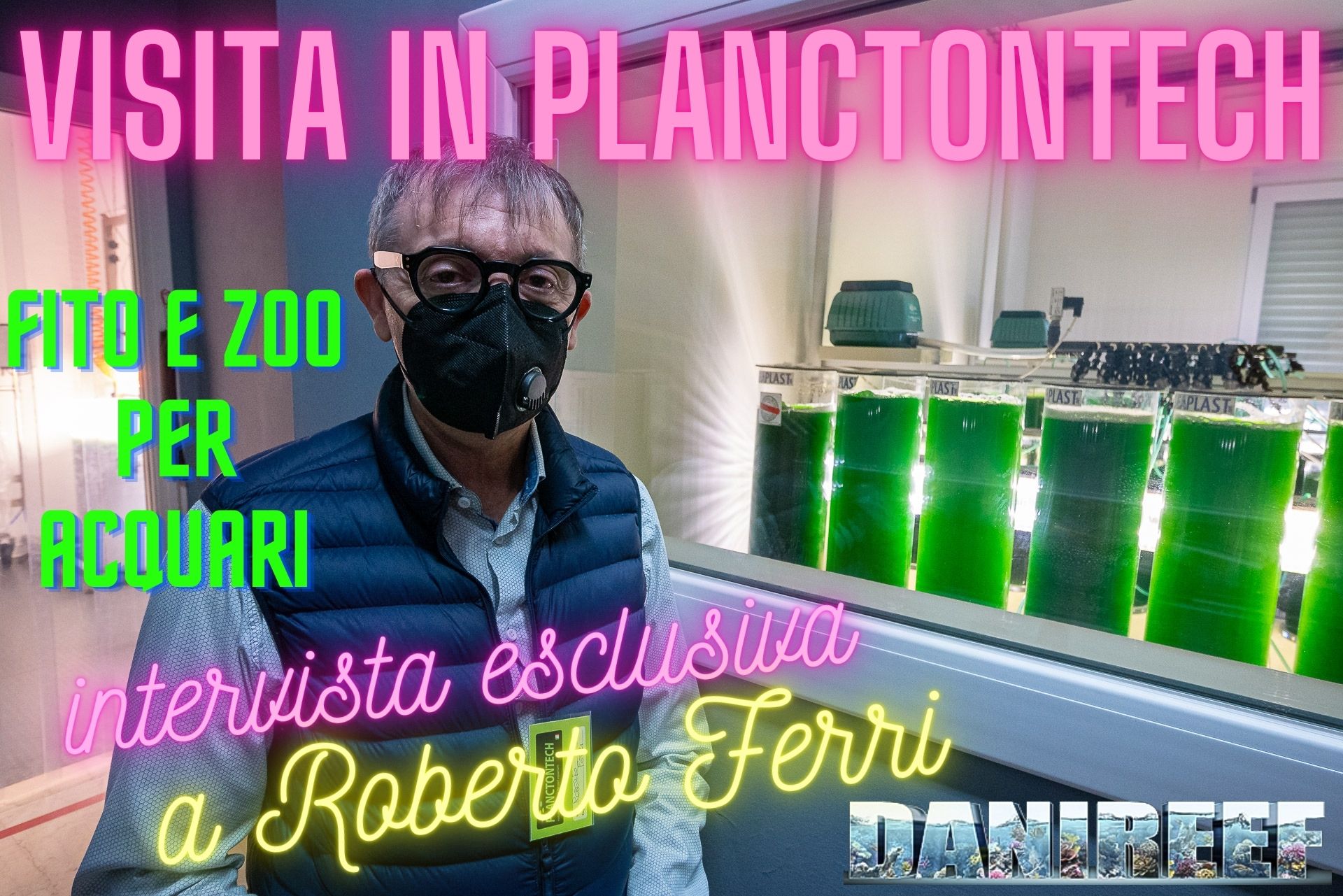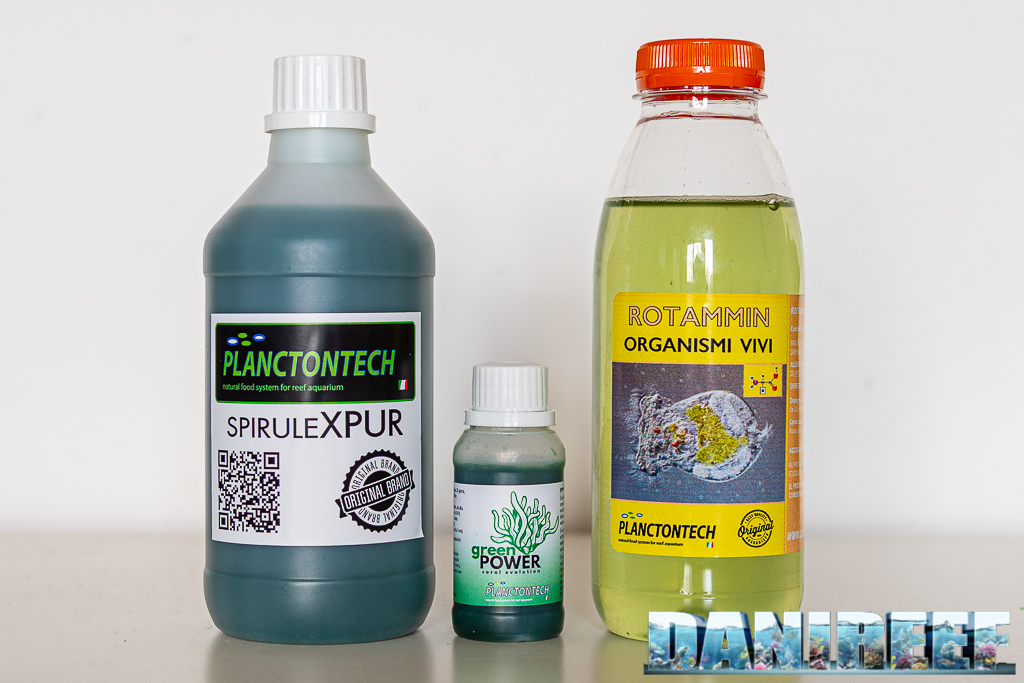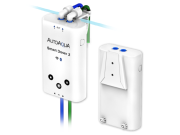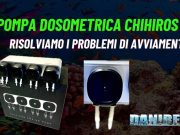Setting
As we have already mentioned in the introduction, the dosage of rotifers in the aquarium is not simple, and it is not easy managing the correct dosage, because, in fact, there is no proper dosage, but it is necessary to calibrate directly to your own aquarium.
To understand the benefits and to understand how to best dose rotifers we took a year’s time, and we have experienced on three high-level marine aquariums. First, as we wrote at the preview of the New Planctondose (see) we put everything in the wonderful marine aquarium by Andrea Negusanti (admires his marine aquarium clicking here).
A few months later we tried other settings in the aquarium of Joseph, which we hope shortly to be able to show on these pages.
 Then again experience a lot inside DaniReef‘s Aquarium.
Then again experience a lot inside DaniReef‘s Aquarium.
So let’s start with what we found.
In the beginning we have to wait until the water turns to amber color, which symbolizes the fact that the rotifers have increased their population and have eaten all the phytoplankton at their disposal. At this point we begin to dose 50ml of phytoplankton every two days and we start to use the dosing pump to ensure, at the beginning, 5ml per hour. This is roughly equivalent to 120ml per day .
At this point we begin to increase the value of the dosing until arriving to a recommended maximum of 40ml per hour, 960ml per day, almost a liter. A huge amount of zooplankton for our aquarium.
At this point we have to make the first distinction.
We have to choose whether to have more rotifers, and then a higher daily dosage of phytoplankton, lead by a continuous charging, even daily, of the phytoplankton, or to obtain a slower time of recharge, every two to three days, and lesser rotifers ready to put in the aquarium. This adjustment does not depend solely on the amount of phytoplankton fed but also and especially by the state of the aquarium. An aquarium with more organic load succeeds further to support the colture that an aquarium that has nutrients equal to zero, but this is not for the nutrients dissolved but for any organisms that this carries, like ciliates and bacteria for example.
It’s absolutely obvious if we’ll dose more phytoplankton, we’ll have more rotifers, and more zooplankton will poured into the aquarium.
An important thing to emphasize however is the fact that, especially in aquariums with extremely low nutrients, such as ones of Andrea and Giuseppe, the zooplankton poured in aquarium contributes to lower them still more, and it could bring the aquarium in a kind of stalemate that could be very dangerous.
So, if the aquariums in which you want to pour the zooplankton have very low nutrient, my advice is to not put too much zooplankton, but to remain at a dose of 50 ml of phytoplankton every 2-3 days. And at the same time, perhaps, decrease a little the skimming.
Acanthastrea lordwensis feeding after administration of live zooplankton
Similarly, if you have not a few fish in the aquarium that you can feed with rotifers, as Pseudanthias rather than Chromis, we can think of a reduced dose of zooplankton, to be sure that there is not an excessive dosage of organisms that can excessively reduce nutrients. An uncontrolled increase of zooplankton, in fact, can be harmful to the aquarium system, because rotifers have a high rate of reproduction, and no animal that could prey them could be a considerable problem.
 Our advice is to increase the dosage carefully controlling the nutrients and the response of the aquarium, and maybe slightly reduce skimming.
Our advice is to increase the dosage carefully controlling the nutrients and the response of the aquarium, and maybe slightly reduce skimming.
The update of the administration protocol
While we were rehearsing in our marine aquariums the administration protocol as we have just presented, Planctontech asked us to make a small change to the protocol itself, to get a better efficiency of the whole system .
The philosophy major change was to disconnect the input from the aquarium to the reactor. While initially we created a continuous flow aquarium>reactor>aquarium in this second way, we have created a container properly filled where the dosing pump took the water to pour into the reactor.
This prevents the contamination of the colture from the organisms living in the aquarium that sometimes, and it has happened to me personally, can clear the colture in a few days. Then you get a colture much more stable and, maybe, stronger.
For this you have to insert into the vessel the water with 1016 density, rotifers and phytoplankton. And then the dosing pump, simple and direct.
The benefits
All three saltwater aquariums, more or less, had a feeding protocol, based primarily on amino acids, sugars and zooplankton dry. The transition to the dosing of live zooplankton must be slow and does not have to eliminate all forms of previous feeding system.
This is because our corals, before starting the dosing, were not more accustomed to prey, so they have to get used to prey on plankton that live and move. Other than that, it’s better to diversify sources of feeding, in our opinion.
Caulastrea feeding after administration of live zooplankton
Once you start the dosage you immediately notice two things. First of all the fish, of course predator species such as Chromis, Pseudanthias, Chrisiptere, and others, will run to eat all the rotifers released into the aquarium, often assuming also poses that can be seen only in nature, such as the school of Chromis that you have in front of the outlet of the pump and moves in unison hunting. In addition to the behavior of fish during the administration you will immediately notice, within a few days, an almost uncontrolled increase of benthic fauna. Amphipods, copepods and all other small organisms that make up the benthic fauna increases in number significantly, and often also of size, with benefit for the entire ecosystem.
 It’s not so easy to understand if something is happening on our corals. well, our corals have had the polyps everted more than usual, thanks to more zooplankton in the water, but I think it’s almost impossible to measure the effective usefulness of the Planctondose. we have no indicators that say to us that live is better than dead zooplankton, maybe during time, this feeding will lead our corals to grow much more better… but it’s impossible to measure it… here.
It’s not so easy to understand if something is happening on our corals. well, our corals have had the polyps everted more than usual, thanks to more zooplankton in the water, but I think it’s almost impossible to measure the effective usefulness of the Planctondose. we have no indicators that say to us that live is better than dead zooplankton, maybe during time, this feeding will lead our corals to grow much more better… but it’s impossible to measure it… here.
We’ll settle to register what we have seen and to tell you in a simple and neutral way.
All three aquariums have had corals in healty state, they never turned brown, neither they did it when we use much more zooplankton than advised. No loss of corals or bleaching, not even when we have stopped all other feed.
In every three aquariums we noted a decrease of nitrogen and phosphorus.
Problems
To use the New Planctondose by Planctontech it’s not easy how using a pump. You need to maintenance it, you have to dose the Phyto continuously, and every two months you have to take out the filter and to clean it.
The rotifers population could be unstable and some time you risk to loose the entire colony without any apparent reason.
Other than that, it’s very important to do the right regulation of the reactor. We need to find the right dosing of Phyto inside reactor, and the zooplankton in the aquarium, to avoid the loss of colture in the reactor and to avoid to lower to much the nutrients. It’s very important to observe very well the aquarium, so to do water tests more often than ever. Every three days it’s a good starting point to try to observe all the changing will be in the aquarium.
Conclusions
We think that the New Planctondose could act as it was a Refugium, built to feed our corals, in this case by dosing Zooplankton, rotifers of Brachionus plicatilis species, but occupying so little space in sump and with immediate results.
In our opinion to dose Zooplankton is the best thing we can do for our aquarium, not less.
We will not worry about fishes with feed problem… by Zooplankton all fishes will eat, and with so many joy… if we can say that about fishes that feed…
No problem, for example, with such a species like Pseudanthias squamipinnis that, in so many cases, the aquarium keepers don’t buy them for fear they will starve. Now we all can.
In such a cases where we have the luck to have some little baby fish in aquarium, like, for example, Amphiprion ocellaris or Pterapogon kauderni we can feed them with rotifers in a very perfect manner.
The benthos will benefit too with a very growth of population that will have positive reaction for all the system.
What else?
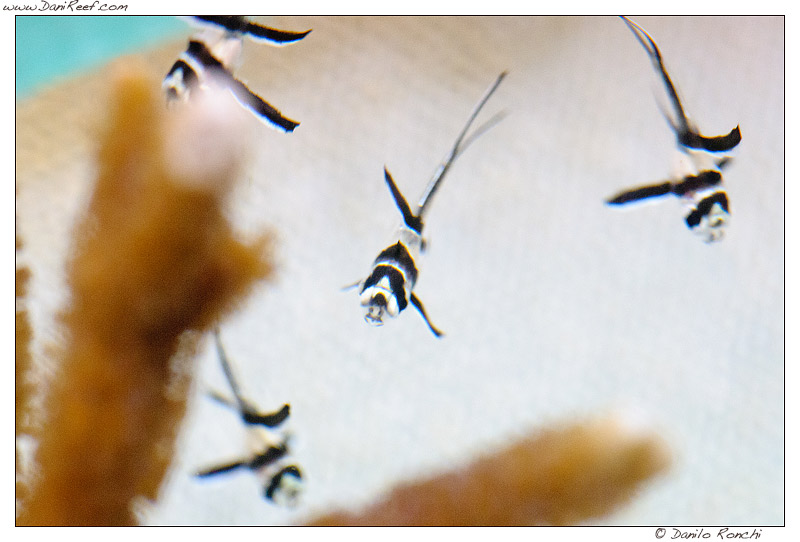
The corals will have more extroflexion of polyps and will show a very good (better?) health. And we have to add that, passing from dried zooplankton to live zooplankton, the aquariums nutrients will decrease, as all our three examples have shown.
Using zooplankton can be only a great addition for whichever aquarium, also if we have experienced some trouble in dosing as we have pointed out in this long review. We have to monitor all the nutrients, we have to strictly setting our skimmer. We have, in a few word, to watch to our aquarium. But yes, in truth, we have to do in any case…
Many thanks to Planctontech for providing the New Planctondose tested.











